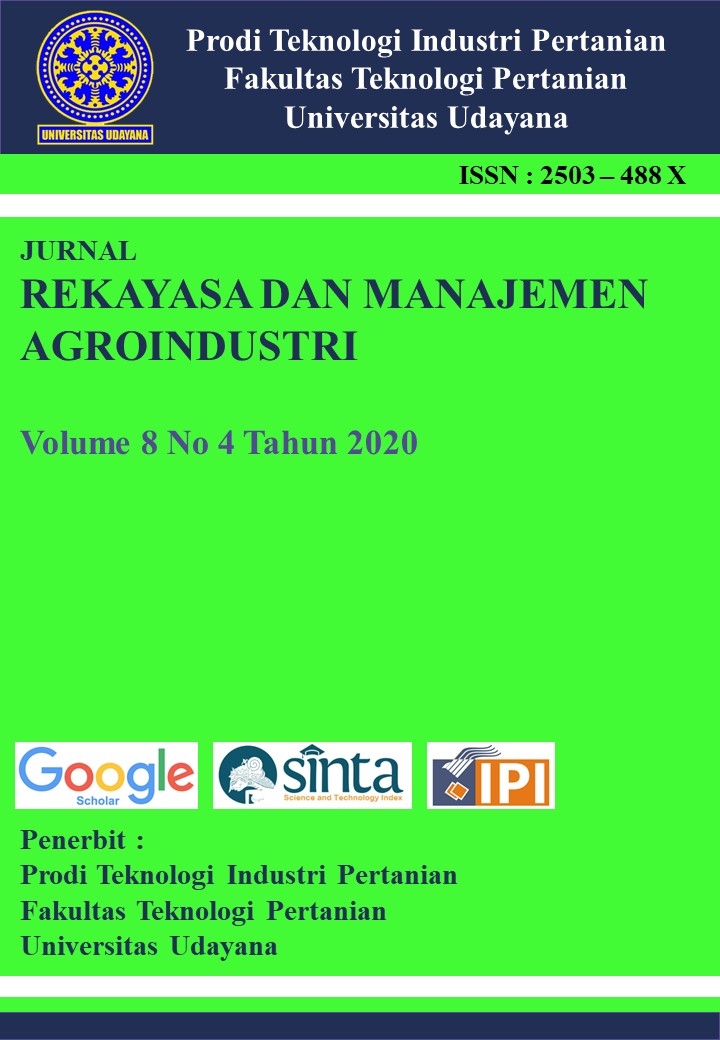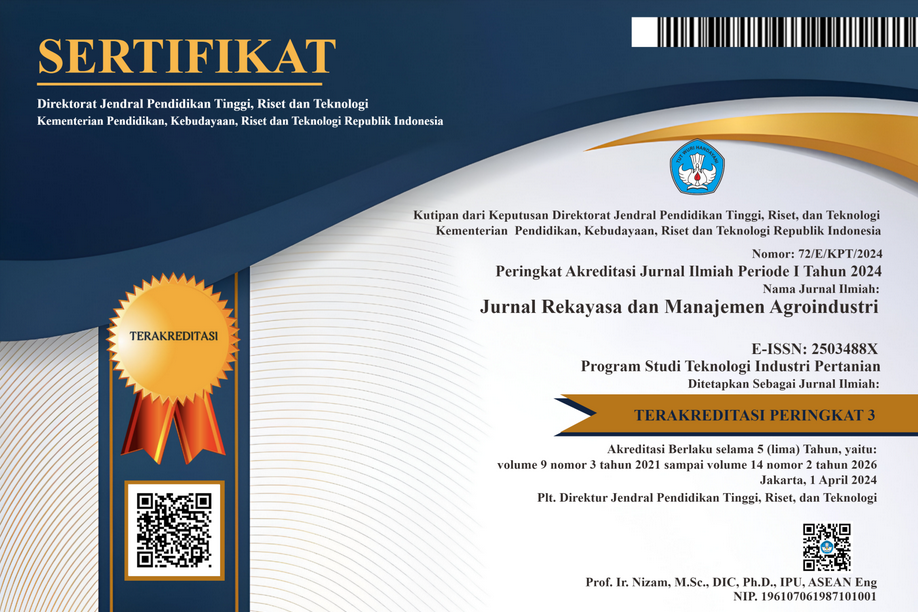Pengaruh Suhu Penyimpanan terhadap Kerusakan Antioksidan Ekstrak Daun Asam (Tamarindusindica L)
Abstract
The purpose of this study was to determine the tendency of tamarind (Tamarindus indica L.) leaf extract damage at different temperatures during storage and to determine the storage temperature that can sustain the antioxidant damage of tamarind leaf extract (Tamarindus indica L.) during storage time. Tamarind leaf extract was stored for 4 (four) weeks at 3 (three) different temperature conditions (room temperature / 27 ± 2?C; cold temperature / 5 ± 2?C; and freezing temperature / -10 ± 2?C) and analyzed for total phenolic, antioxidant capacity. and weekly levels of vitamin C. The data obtained were tabulated and analyzed descriptively. The results of this study indicate that at room temperature (27 ± 2)?C, cold temperature (5 ± 2)?C, and freezing temperature (-10 ± 2)?C, total phenolic, vitamin C levels, and antioxidant capacity have a tendency to decrease during storage. four weeks. The highest decrease in total phenolic occurred at room temperature (27 ± 2)?C, the highest decrease in vitamin C levels and antioxidant capacity occurred at freezing temperatures (-10 ± 2)?C. Storage with cold temperatures (5 ± 2)?C can retain the antioxidant content of tamarind leaf extract for four weeks and is the best storage condition.
Keywords : Storage temperature, tamarind leaves extract, totalphenolicc, antioxidant, vitamin C
Downloads

Ciptaan disebarluaskan di bawah Lisensi Creative Commons Atribusi-BerbagiSerupa 4.0 Internasional.
Seluruh artikel di Jurnal ini dapat disebarluaskan atas tetap mencantumkan sumber yang syah. Identitas judul artikel tidak boleh dihilangkan. Penerbit tidak bertangggung jawab terhadap naskah yang dipublikasikan. Isi artikel menjadi tanggung jawab Penulis.














